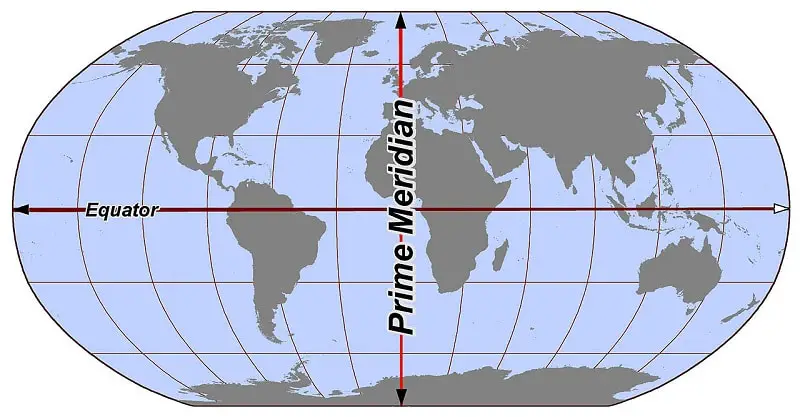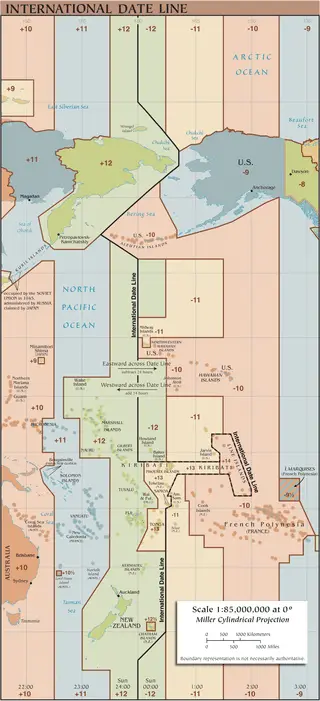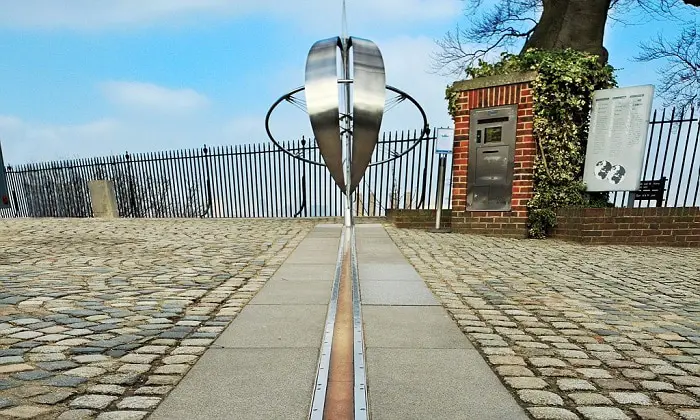Just like the Equator divides the earth’s surface into the northern and southern hemispheres, in a similar way, Greenwich Prime Meridian divides the earth’s surface into the eastern and western hemispheres.
In this exclusive article, I will be discussing the definition of the prime meridian, especially its historical overview. Questions like why we call Greenwich meridian lines the prime meridian?
More importantly, I will also be discussing the importance of prime meridian. Such that the relation between prime meridian and the international date line and many more. Let’s dive right in…!!!
What is Prime Meridian?

By definition, the line of longitude at 0 degrees is known as the prime meridian. Well, if I talk about the lines of latitude, the central reference point for the latitudinal lines is the Equator.
In fact, the equator is the permanent central latitude. In other words, whatever happens, it will never change. The Equator will always be designated as the central latitudinal reference point.
On the other hand, if I talk about the lines of longitude, there is no permanent central longitudinal reference point. Meaning, we can think of any place on the earth’s surface as the central reference point for the lines of the longitude.
In the current world scenario, the line of longitude that passes through Greenwich London is taken as the central longitudinal reference point.
Why Greenwich Meridian Line as Prime Meridian?
As I said, we can think of any place as the prime meridian. Therefore, as a result, almost each and every country or kingdom had its own prime meridian throughout the course of the historical timeline.
For example, in Ancient India, the prime meridian passed through the Indian City of Ujjain and Rohtak. Or, like imperial China’s prime meridian used to pass through the city of Beijing.
Editor’s Choice: Difference Between Equator and Prime Meridian (Tabular Form)
In fact, if I talk about the recent historical timelines, in the 18th century, so many countries had their own Prime meridian lines. For example, Paris had Paris meridian, Germany had Berlin Meridian. Denmark had Copenhagen meridian, or, Great Britain had Greenwich meridian.
However, due to the modern economic integration happening throughout the world, at the end of the 18th century, world leaders decided to have a single Prime meridian. I mean having so many prime meridians at the same time was causing havoc in the process of integration and mobility.
Therefore, as a result, in 1884, at the International Meridian Conference in Washington, D.C., countries voted Greenwich meridian as the single prime meridian of the whole world.
Importance of Prime Meridian
In order to find the geographical coordinates, position, or location of a certain object, what we need is the latitude and longitude of that object.
And, when we have both of them, we can easily mark out that specific position. More importantly, the Greenwich prime meridian helps us to fix the international date line throughout the world.
International Date Line and Prime Meridian
The Greenwich Prime Meridian is the basis for the International Date Line. Well, what is International Date Line? According to the Geography Realm, the line on Earth where one calendar day becomes the next, we call it the International Date Line (IDL).
The line is generally found 180 degrees from the Prime Meridian. But, the line circumvents some regions and islands to avoid dividing contiguous pieces of regions and countries into two separate days.

Not to mention, there are 23 one-hour slices and two 30 minutes slices that divide the world up into different time zones. Traveling from east to west over the International Date Line advances the calendar by one day. Check the above image for proper understanding.
Frequently Asked Questions
1. What are Lines of Latitude?
ANS: Latitude refers to the geographical coordinate that determines the position of an object to the north-south of the equator. The direction of latitudes is from east to west, therefore, horizontal lines.
2. How many lines of latitude are there?
ANS: In total, there are 181 lines of latitude on the earth’s surface.
3. What are Lines of Longitude?
ANS: Longitude refers to the imaginary geographical coordinate that determines the position of an object of the east-west of the prime meridian. The direction of longitudes is from north to south, therefore, vertical lines.
4. How many lines of longitude are there?
ANS: In total, there are 360 lines of longitude on the earth’s surface.
5. Where is the prime meridian located?
ANS: In the current world scenario, the prime meridian passes through Greenwich London. That’s why we also call it the Greenwich meridian line.
6. What is the opposite of prime meridian?
ANS: The opposite of the prime meridian is the Antimeridian. It is located at 180-degree longitude.
That’s it for this post. If you like this article, share it if you like, like it if you share it. You can also find us on Mix, Twitter, Pinterest, and Facebook. Hey man, If you have come this far, do give us feedback in the comment section. It would make my day. You can also make a donation. Your donations will help us to run our website and serve you BETTER. Cheers!!!
